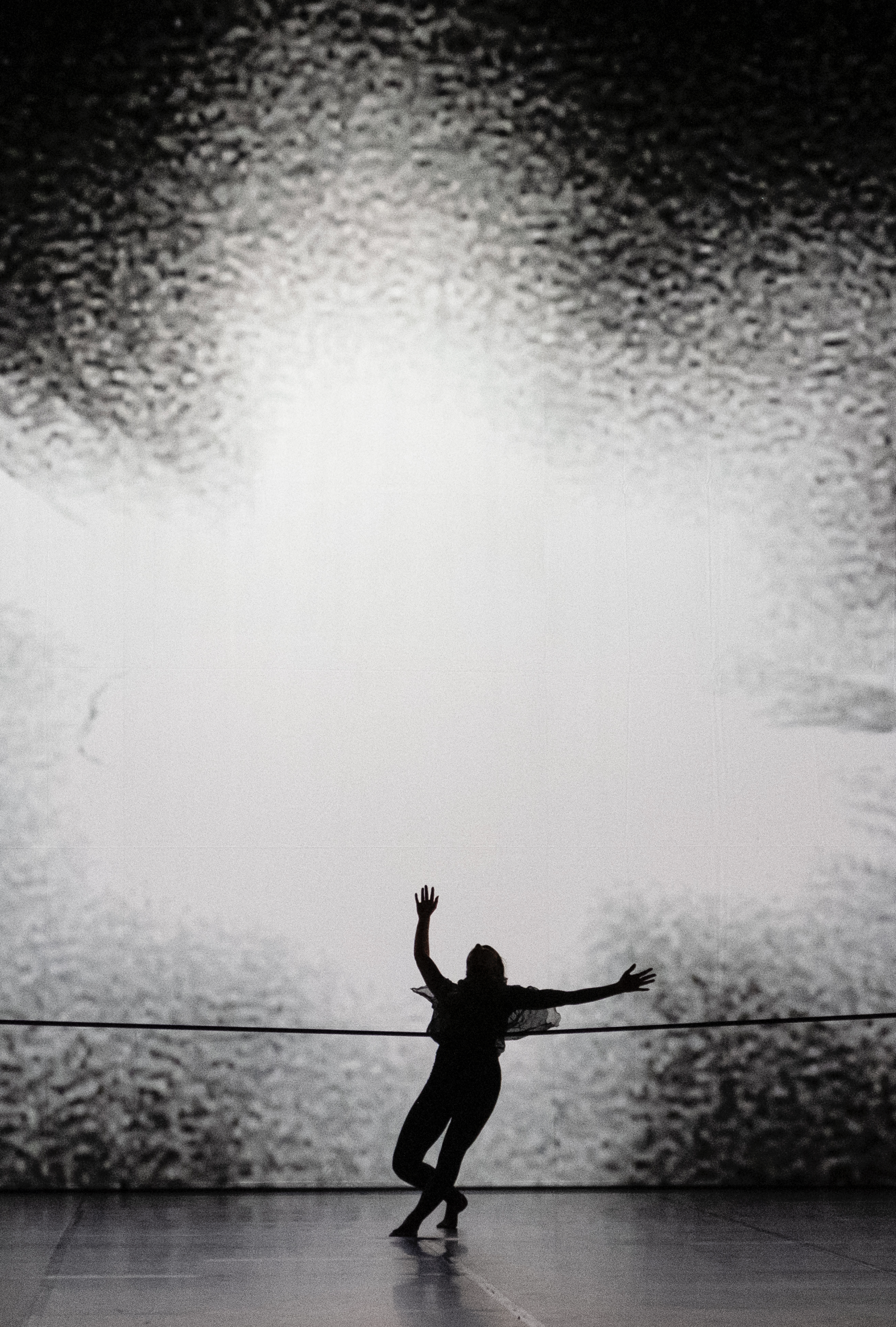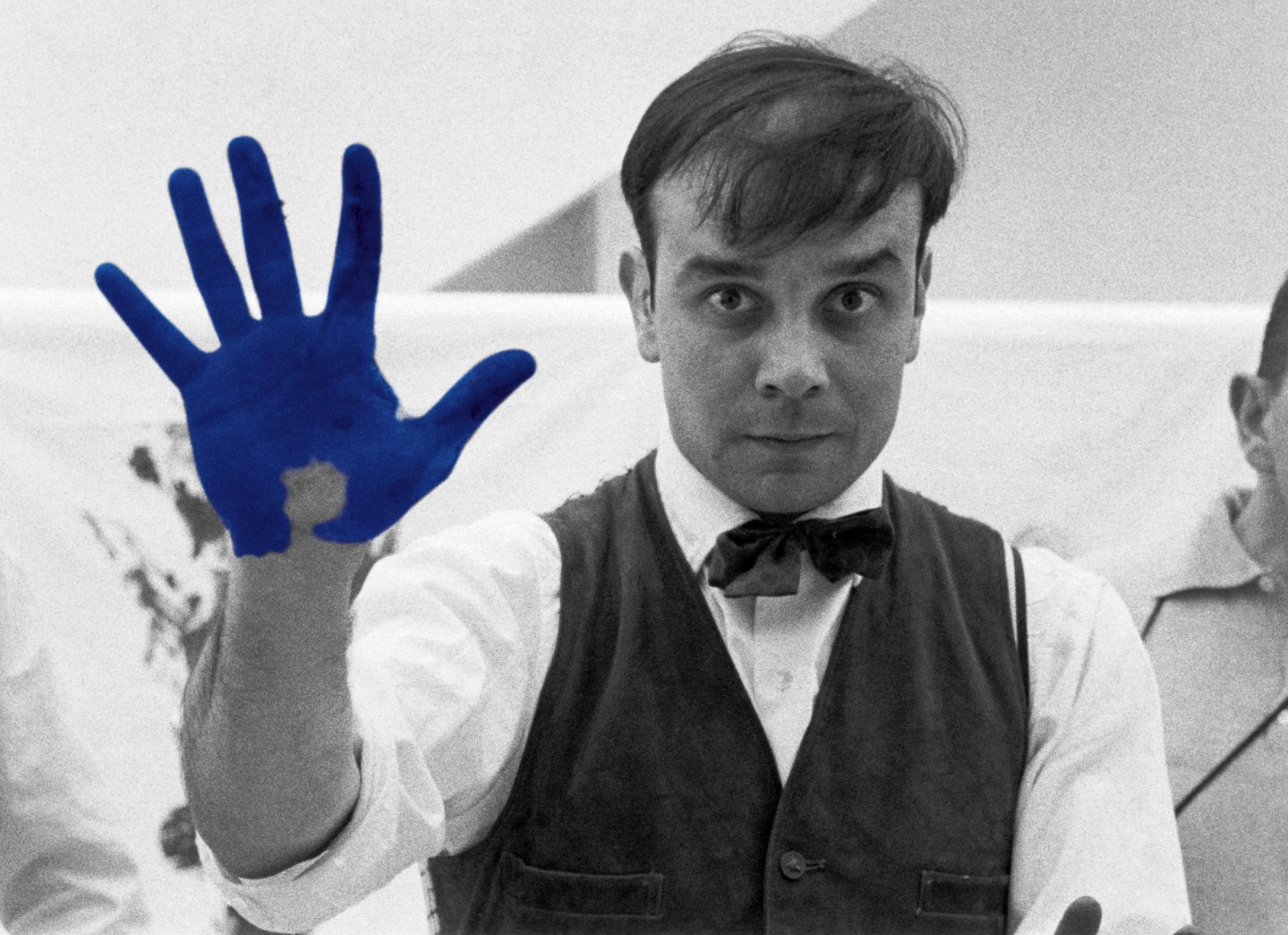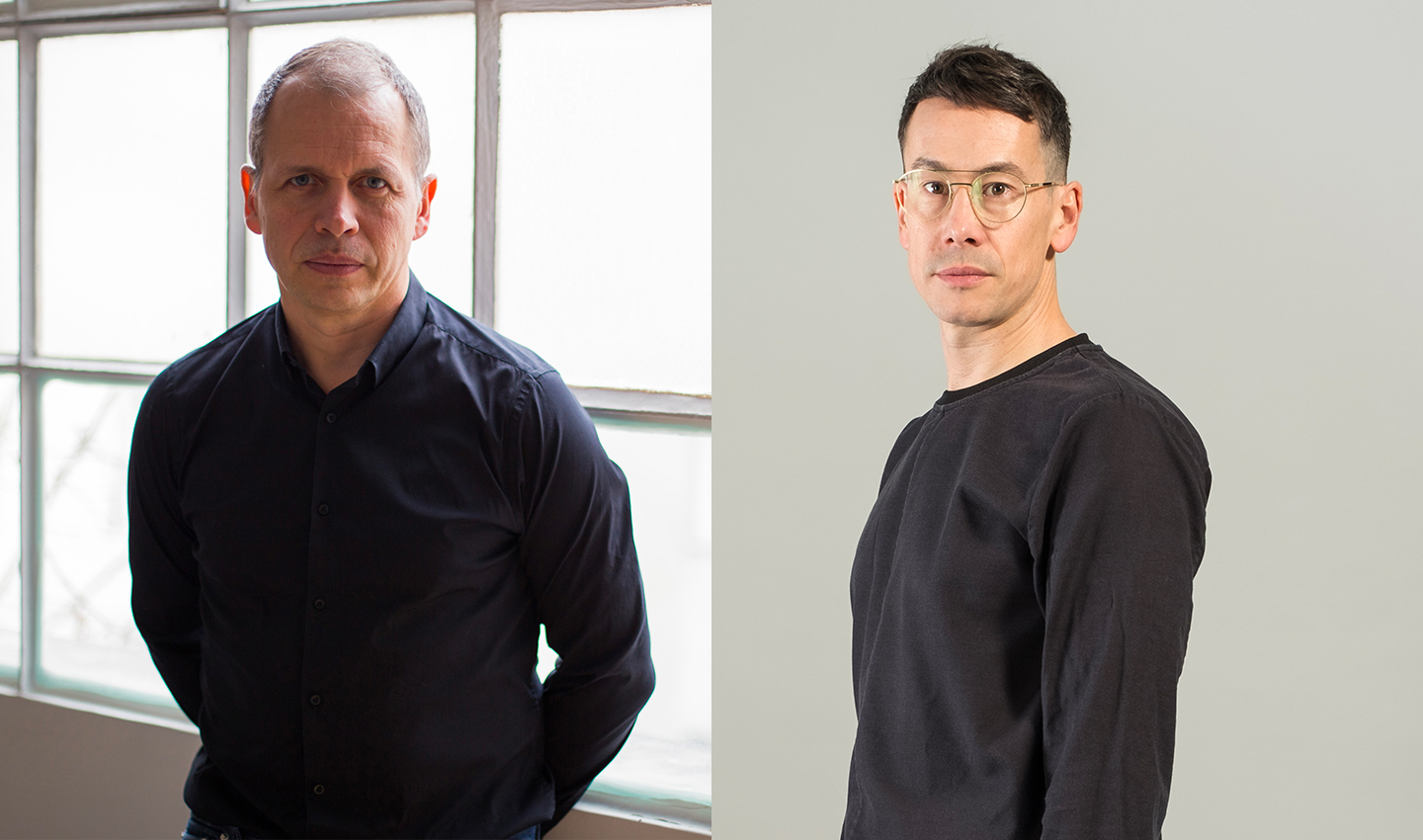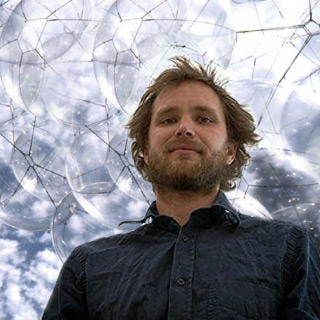Program 1: Air-Condition
Program 1: Air-Condition
November 10, 11, 12 at 8:00PM
November 14 at 3:00PM
at Opéra national de Lorraine (Nancy)
26 dancers
Duration: 1 hour
Photos © Laurent Philippe & Emilie Salquèbre
In 1954 Yves Klein proposed a ballet entitled, “LA GUERRE” (de la ligne et de la couleur) – “The War” – (between line and color). Although the manuscript is incomplete and was never staged, it had some clear musical, visual, and scenic intentions; ones that reflected a moment in history and yet still continue to be extremely relevant. On paper La Guerre was a grandiose, scenic manifestation of his physical and performative reflections on his art’s immateriality. Klein was a boundless creative energy, great influencer and participating member of the ZERO group. He was referred to as a modern mystic, and creator of air architecture and whose fanciful ideas even led him to his iconic leap into the void. Because of his energetic physicality, in his art practice as well through his Judo training, and his interest in the ephemeral, the fact that he proposed a “ballet” seems like a clear continuation of his creativity.
Choreographers Petter Jacobsson and Thomas Caley together with collaborating artist Tomás Saraceno, set to l'île resonante by Eliane Radique, want to make visual the resonating vibrations that surround us daily. Saraceno’s work has throughout his career questioned how we may inhabit the “air”, through his interest to remove our dependence on fossil fuels to the intricate systems of spider web construction. In this we can see a heritage of ideas and concepts passed down from Klein and his generation. Air – Condition is a new creation that re-imagines questions posed by Yves Klein in 1954. What further sensibilities lie out there in the void? Lets take the leap and find out.
Freely adapted from La Guerre (entre la ligne et la couleur) [War (between line and color)] by Yves Klein.
Production by the CCN - Ballet de Lorraine in collaboration with the Centre Pompidou-Metz through the project Artiste Associé.
Rates
Full rate: 1st cat. 35€ / 2nd cat. 25€ / 3rd cat. 17€
Reduced rate*: 1st cat. 26€ / 2nd cat. 18€ / 3rd cat. 12€


ACCOMPANYING THE PROGRAM
"Warming up" the spectator's view
An hour before the performance, Joris Perez, a choreographic artist and community outreach coordinator, reveals some key elements to better understand the work, through a physical approach accessible for all audiences.
November 11-12 at 7:00PM
Foyer of the Opéra national de Lorraine (Nancy)
Duration: 30 minutes
Rate: free with the reservation of a ticket to the performance (limited availability – sign-up is required)
BORD DE SCÈNE (On stage)
At the end of the first performance of a new work performed at the Opéra national de Lorraine, Petter Jacobsson and Thomas Caley will speak about their work on the piece, and answer audience questions.
Wednesday, November 10 2021 - after the premiere
Opéra national de Lorraine (inside the Opera itself)
Duration: 20 minutes
We'll take care of the kids
Parents, now you have a choice! On performances taking place on Sundays, you may either attend the performance with your children, or leave them with us for a fun workshop about the program, directed by Joris Perez, the choreographic artist designated and trained in audience liaison.
Another way to share the season with your family!
Workshop open to children 4 to 10 years old (number of children limited)
Date and time: Sunday, November 14, 2021 / beginning at 2:30 PM
Place: CCN – Ballet de Lorraine (near the Opéra national de Lorraine)
Running time: the length of the performance
Rate: 5 euros/ child with the reservation of a ticket by an adult, for the same date (sign up required in advance)
Les artistes
Petter Jacobsson et Thomas Caley
Une équipe créative
The choreographers and dancers Petter Jacobsson and Thomas Caley, started collaborating in the nineteen nineties, choreographing works for Martha@Mother, the Joyce Soho in New York and the opera Staden for the Royal Opera House in Stockholm, a commission for the 1998 Cultural capital of Europe. For the Royal Swedish Opera, Ballet and Orchestra they created two immense Happenings, In nooks and crannies 2000 and 2001. The two different performances, occupied non-traditional performance spaces throughout the entire theatre.In 2005 they started their own company creating works entitled Nightlife, Untitled partner, Flux, No mans land - no lands man and The nearest nearness. In 2002 they received a “Goldmask” for the musical Chess with Björn Ulveus and Benny Andersson (ABBA).
As of 2011, Petter is choreographer and the Artistic Director and Thomas choreographer and the Coordinator of Research for the Centre Chorégraphique National - Ballet de Lorraine, Nancy. For the company they have created Untitled Partner #3, Performing Performing, Relâche, Armide, Discofoot, L’Envers, Record of ancient things, Happening Birthday and For Four Walls.
Their programming for the CCN is organized around questions or themes and each year they invite a wide variety of artists both French and international to play and question within them.Their first programming season 2012, was entitled La saison de La. There they asked why is it Le Ballet but La dance? In response to this question of gender they presented solely female choreographers of diverse backgrounds. The season Tête à tête à têtes was a dialog focused on our modernity and its influences and connections with contemporary artists and spectators. Live! was a celebration of the ephemerality of the performing arts. Together with the continuing seasons, Folk + Danse = (R)évolution, Unknown Pleasures, 50 ans!, Fifty Plus, all have continued to challenge, celebrate and question our current 19/20 season’s subject, the need for all this Useless Beauty. To insure a continued lively and non fixed use of the artform they have also worked with the Musée d’Art Moderne in Paris and Centre Pompidou- Metz and Paris, and an original initiative LAB-BLA-BAL, a series of discussions and open house art experiments.
Born in Stockholm, Petter Jacobsson started his studies in dance at the age of three and was further educated at the Royal Swedish Ballet School, the School of American Ballet under Stanley Williams and he later graduated from the Vaganova Academy in St.Petersburg in 1982. As a principal dancer with the Sadler’s Wells Royal Ballet in London between 1984 to 1993, he toured internationally dancing all of the renowned classical roles as well as appearing as guest artist with numerous international companies. He later moved to New York to begin a freelance career, dancing with Twyla Tharp Dance Company, Merce Cunningham Repertory group, Irene Hultman Dance and later with Deborah Hay. In 1999, Petter was appointed artistic director of the Royal Swedish Ballet in Stockholm.
Thomas Caley started his dance training at Interlochen Arts Academy in Michigan, he continued his education earning a BFA from Purchase College in upstate New York in 1992. After graduating from university, a year was spent experimenting, performing in a multitude of independent projects in New York City. From 1993 until 2000 he was a principle dancer with the Merce Cunningham Dance Company touring throughout the world and participating in the creation of twelve new works. In 2000 he moved to Stockholm to continue his collaboration with Petter Jacobsson and to continue working as a freelance dancer in Europe, in France Thomas has worked with Boris Charmatz on the 50 ans de danse & flip book projects.
Tomás Saraceno
Tomás Saraceno’s practice is informed by concepts linking art, life science, and the social sciences. Enmeshed in the junction of these worlds, his floating sculptures, community projects, and immersive installations propose sensory solidarity with the planet through a social, mental, and environmental ecology of practice. For more than a decade, he has been imagining a world free from carbon, extractivism, capitalism, patriarchy and fossil fuel - or what he calls CECPF- that inflames some forms of life. In an unorthodox collaboration with cosmic webs, the air, spider/webs and indigenous communities, energies converge in a new practice of solidarity. In our era of climate emergency—when ecosystems are at risk—Saraceno’s work, deepening our understanding of environmental justice and interspecies cohabitation, carried out through the artist’s initiated projects Aerocene and Arachnophilia.
For more than two decades, Saraceno has activated projects aimed towards an ethical collaboration with the atmosphere, including Museo Aero Solar (2007-) and the Aerocene Foundation (2015-), a non-profit organization devoted to community building, scientific research, artistic experience, and education.
At the core of the Foundation is Aerocene, a multi-disciplinary project that proposes a new era for the air, to free the air. The Aerocene community is active in 126 countries composed of community members floating over six continents in forty-three different countries, participates both on the ground and in the fields of science and politics. With 6,700 minutes in the air free from carbon and thirty-three Museo Aero Solar’s built worldwide, Aerocene actively seeks to devise new modes of sensitivity, reactivating a common imaginary towards an ethical collaboration with the environment and the atmosphere. Through the Aerocene app hundreds of Aerocene community members have flown 4747 virtual flights, travelling 137,757,302 km free of carbon.
studiotomassaraceno.org / aerocene.org

Yves Klein
Yves Klein, born in 1928 in Nice, had as a first vocation to be a judoka. It was only back in Paris, in 1954, that he dedicated himself fully to art, setting out on his ‘adventure into monochrome’.
Animated by a quest to ‘liberate colour from the prison that is the line’, Yves Klein directed his attention to the monochrome which, to him, was the only form of painting that allowed to ‘make visible the absolute’.
By choosing to express feeling rather than figurative form, Yves Klein moved beyond ideas of artistic representation, conceiving the work of art instead as a trace of communication between the artist and the world; invisible truth made visible. His works, he said, were to be ‘the ashes of his art’, traces of that which the eye could not see. Yves Klein’s practice revealed of new way of conceptualising the role of the artist, conceiving his whole life as an artwork. ‘Art is everywhere that the artist goes’, he once declared. According to him, beauty existed everywhere, but in a state of invisibility. His task was to to capture beauty wherever it might be found, in matter as in air.
The artist used blue as the vehicle for his quest to capture immateriality and the infinite. His celebrated bluer-than-blue hue, soon to be named ‘IKB’ (International Klein Blue), radiates colourful waves, engaging not only the eyes of the viewer, but in fact allowing us see with our souls, to read with our imaginations. From monochromes, to the void, to his ‘technique of living brushes’ or ‘Anthropometry’; by way of his deployment of nature’s elements in order to manifest their creative life-force; and his use of gold as a portal to the absolute; Yves Klein developed a ground-breaking practice that broke down boundaries between conceptual art, sculpture, painting, and performance.
Just before dying, Yves Klein told a friend, "I am going to go into the biggest studio in the world, and I will only do immaterial works."
Between May 1954 and June 6, 1962, the date of his death, Yves Klein burned his life to make a flamboyant work that marked his era and still shines today.


